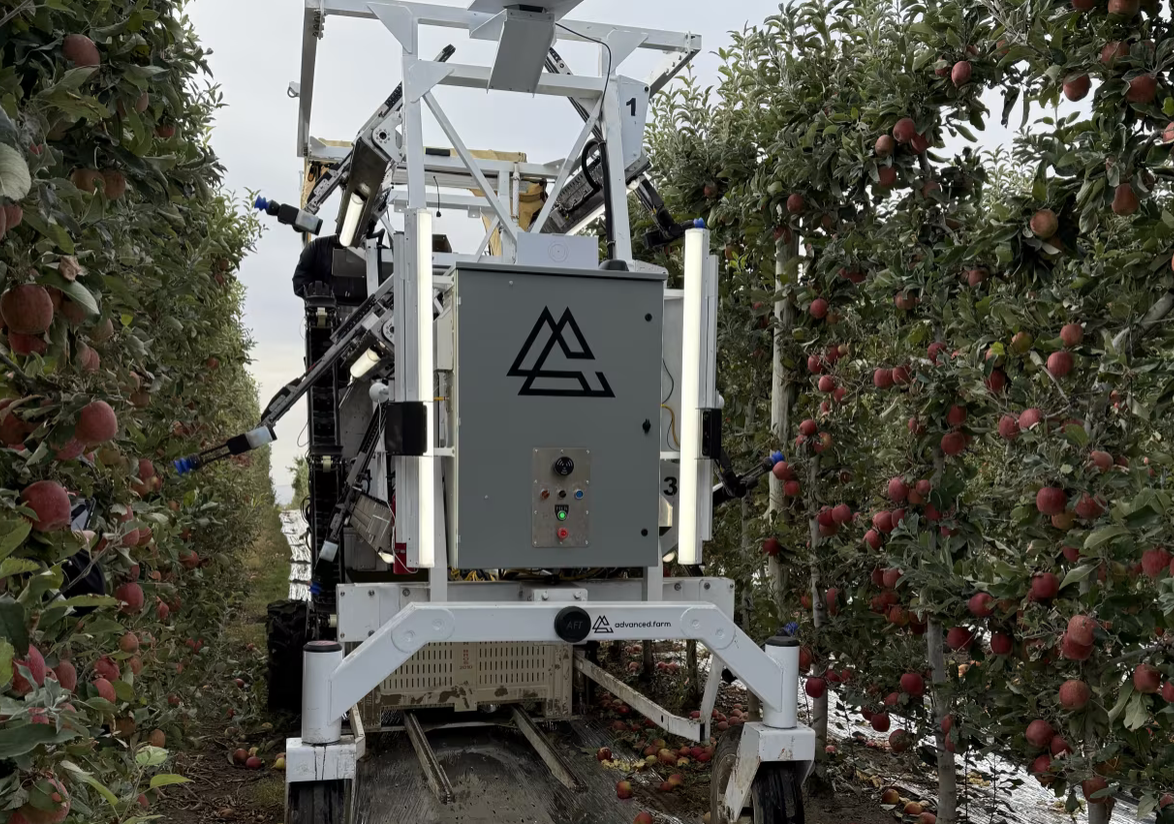Farms automate harvests of corn and other crops, but the technology still needs work.
It’s harvest time in America’s major apple-producing states, including Washington, New York and Michigan. The Agriculture Department projects the U.S. crop this year will surpass 11 billion pounds—nearly all picked by hand in brisk fall air.
With the rise of technology and artificial intelligence, why not build robots to pick apples, along with other fruits and vegetables? It’s a question that some in President Trump’s circle have raised. In a CNN interview this year, White House deputy chief of staff Stephen Miller was asked about the labor shortage on farms amid deportations. “As for the farmers, there is a guest worker program that President Trump supports,” Mr. Miller replied. “Over time as well, we will transition into automation, so we’ll never have to have this conversation ever again.” Agriculture Secretary Brooke Rollins also has suggested that automation is part of the solution to the agricultural labor shortage.
It’s true that farm work is getting more automated. Farmers have mechanized much of the work on row crops such as corn and soybeans, which can be harvested with large equipment. But crops such as peaches and asparagus require delicate handling.
The apple industry illustrates the challenges of automating. Facing a shrinking supply of pickers and rising labor costs, U.S. apple growers have long wanted robotic harvesters. Public- and private-sector researchers have experimented with mechanization for decades, but progress has been slow. Some robotics companies have shut down or sold their innovations when they ran out of funding or didn’t turn sufficient profits.
Several American, European and Israeli companies, along with universities, have tested various ideas. The most promising model is a robot with 12 arms, six on either side, each bearing a camera and suction cups. These arms pluck apples as the large, boxy robot rolls down orchard rows. Another prototype is an autonomous drone that uses vision algorithms to detect ripeness and grippers to pick the fruit. Yet another is a human-controlled device that uses a vacuum tube to suck up the apples.
But many obstacles stand in the way of widespread commercial use. “Robotic harvesters remain slower than human workers and make more errors,” says Jon DeVaney, president of the Washington State Tree Fruit Association. Growers see the challenges firsthand. Jeff Cleveringa, orchard manager for Columbia Fruit Packers in Wenatchee, Wash., has tested several robots in the field. He says even the best models pick more slowly than people, have trouble dropping apples into bins without bruising them, and struggle to clip the stems, which can become a problem when they harden, stabbing other apples.
Another complication is that to accommodate robotic pickers, many farmers would need to plant new orchards with apples growing on trellises rather than in rows of traditional lollipop-shaped trees. Farms are moving toward this model, but that takes time and money. Establishing a trellised orchard can cost two to four times as much as establishing a conventional free-standing orchard. To enable robots to navigate fields and harvest efficiently, many farms would need to plant fruiting walls—apple trees that have been trained to grow in dense canopies against flat vertical surfaces.
Mr. Cleveringa, the orchard manager, estimates it will be five to seven years before commercial-ready robots roll into orchards and another several years before 30% of farms use robots to harvest. He is optimistic about the future of automation but says he remains “very reliant on hand labor.” Ines Hanrahan, executive director of the Washington Tree Fruit Research Commission, is similarly excited about the strides innovators have made but agrees that “picking is not going to be automated overnight, and it will be a gradual process.”
Mr. Trump is caught between two competing goals: enforcing immigration law by deporting illegal aliens and ensuring enough workers for American agriculture. While balancing these objectives, he should remember that U.S. farms—especially those growing crops that require delicate handling—will depend on foreign and immigrant workers for years.
“People are still needed on farms. Period,” Ms. Hanrahan says. “If anything, we need more people.”
To see this article in its entirety and to subscribe to others like it, please choose to read more.
 Listen Online
Listen Online Watch Online
Watch Online Find a Station in Your Area
Find a Station in Your Area









 Listen Now
Listen Now Watch Online
Watch Online
